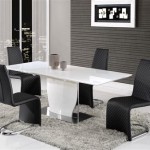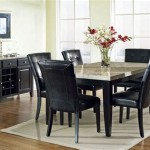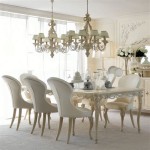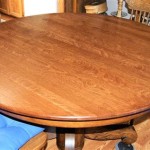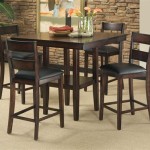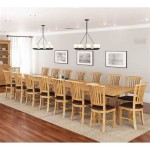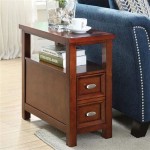The Allure and Craft of the Wood Live Edge Coffee Table
The wood live edge coffee table has emerged as a popular furniture choice, prized for its unique character and blend of natural aesthetics with functional design. Unlike traditionally manufactured furniture featuring clean, uniform lines, a live edge coffee table celebrates the inherent imperfections and organic beauty of wood. This article explores the key characteristics, construction techniques, design considerations, and maintenance associated with wood live edge coffee tables.
The term "live edge" refers to the natural edge of a wood slab that is retained during the milling and fabrication process. Instead of being squared off, the edge maintains the original contours and irregularities of the tree from which it was harvested. This detail creates a one-of-a-kind piece of furniture where no two tables are exactly alike. The appeal of live edge furniture stems from its connection to nature, bringing the outdoors inside and adding a rustic yet sophisticated touch to interior spaces.
Understanding the Wood Selection Process
The selection of wood is paramount in the creation of a high-quality live edge coffee table. Different wood species offer varying characteristics in terms of color, grain pattern, hardness, and durability. Popular choices include walnut, maple, cherry, oak, and redwood, each possessing unique aesthetic and structural properties.
Walnut is highly valued for its rich, dark brown color and intricate grain patterns. It is a durable hardwood that offers a luxurious and sophisticated look. Maple, on the other hand, is known for its light color and fine grain, providing a clean and contemporary aesthetic. Cherry wood offers a reddish-brown hue that deepens over time, alongside a smooth texture that polishes beautifully. Oak, a classic hardwood, provides a robust and sturdy foundation with distinctive grain patterns visible including the medullary rays. Redwood, a softer wood variety, is praised for its reddish-brown color and natural resistance to decay, making it suitable for both indoor and covered outdoor settings.
Beyond the species, the specific characteristics of each wood slab are carefully evaluated. Factors such as the presence of knots, cracks, voids, and variations in grain pattern contribute to the unique character of the table. These natural features are not necessarily considered flaws but rather integral elements that enhance the rustic appeal. Skilled artisans carefully assess the structural integrity of the slab and may choose to fill or reinforce certain areas to ensure stability and longevity. The age and sourcing of the wood influence environmental impact. Reclaimed wood from fallen trees or repurposed beams is frequently used, promoting sustainability and reducing the demand for newly harvested timber.
Crafting the Live Edge Coffee Table: Key Techniques
The construction of a wood live edge coffee table involves several meticulous steps, requiring both technical skill and artistic vision. The process typically begins with selecting a suitable wood slab and ensuring it is properly dried and seasoned to prevent warping or cracking during use. Kiln drying is a common method used to reduce the moisture content of the wood, stabilizing it for furniture construction.
Once the wood is prepared, the craftsman cleans and prepares the live edge itself. Loose bark and debris are carefully removed, while preserving the natural contours and imperfections. The edge may be lightly sanded to smooth any sharp areas, but the goal is to maintain its organic shape as much as possible. A resin can be applied along the bark edge to help further secure the bark to the slab.
The next stage involves flattening the wood slab to create a level surface for the tabletop. This is typically accomplished using a large-scale planer or router jig. Flattening ensures that the table will sit evenly and provide a stable surface for use. Filling any voids, cracks, or knots is done with epoxy resin. The resin is often tinted with pigments to match the wood's natural color or to provide a contrasting visual element. This process not only enhances the aesthetic appeal but also strengthens the structural integrity of the slab.
Leg selection and attachment are crucial aspects of the design. The legs can be made from various materials, including metal, wood, or a combination of both. Metal legs, such as steel or iron, offer a modern and industrial aesthetic, while wooden legs provide a more traditional and rustic look. The legs are chosen to complement the style and characteristics of the wood slab, and attached securely to the underside of the table using screws, bolts, or mortise and tenon joints. The type of attachment will depend on the weight of the table top and the design requirements.
Finishing the wood surface is essential for protecting it from moisture, scratches, and everyday wear and tear. A variety of finishes can be used, including oils, waxes, varnishes, and lacquers. Oil finishes, such as tung oil or linseed oil, penetrate the wood and enhance its natural color and grain pattern. Wax finishes provide a soft sheen and a tactile feel. Varnishes and lacquers create a durable, protective layer that is resistant to water and scratches. The choice of finish depends on the desired aesthetic and the level of protection required. Several coats of finish are typically applied, with light sanding between coats, to achieve a smooth and even surface.
Design Considerations and Integration into Interior Spaces
The design of a live edge coffee table must consider the unique characteristics of the wood slab and the overall aesthetic of the interior space. The size, shape, and color of the slab should complement the existing furniture and décor. The table's dimensions should be proportional to the room and provide ample surface area for its intended use. The height of the table is an important consideration, ensuring comfortable use for those seated nearby.
The shape of the live edge can be a defining feature of the table. Some slabs have gentle curves, while others exhibit more dramatic undulations and irregularities. The shape of the edge can be used to create a visual focal point in the room. The position of the legs also influences the overall design. Legs can be placed in a traditional configuration, at the corners of the table, or they can be positioned in more unconventional ways to create a modern and sculptural look.
Live edge coffee tables can be integrated into various interior design styles. In rustic or farmhouse-style homes, a live edge table with wooden legs and a natural oil finish can enhance the warm and inviting atmosphere. In modern or industrial spaces, a live edge table with metal legs and a sleek varnish finish can provide a striking contrast to the clean lines and minimalist décor. In bohemian or eclectic settings, a live edge table with a unique shape and a colorful epoxy resin inlay can add a touch of artistic flair.
The placement of the table within the room is also important. It is positioned as a central element in a living room seating area, providing a surface for drinks, books, and decorative items. It can also be placed in front of a sofa or sectional, acting as a functional and stylish centerpiece. The area surrounding the table should be kept clear of clutter to allow its natural beauty to shine.
The addition of complementary accessories can further enhance the aesthetic appeal of the live edge coffee table. A simple vase with flowers, a stack of art books, or a decorative tray can add visual interest and personality. It's important to choose accessories that complement the style of the table and the overall décor of the room. Avoid overcrowding the table with too many items, as this can detract from its natural beauty. Think about using coasters to help protect the surface from water marks, though a quality finish will largely protect it from these.
Lighting can play a significant role in highlighting the beauty of a live edge coffee table. Natural light from windows or skylights can accentuate the wood's grain pattern and color. Artificial lighting, such as spotlights or pendant lamps, can be used to create dramatic shadows and highlight the table's unique features. Strategically placed lighting can transform the table into a stunning focal point in the room.
The longevity of a live edge coffee table depends on its proper care and maintenance. Regular cleaning with a soft cloth and a mild soap solution can remove dust and dirt. Avoid using harsh chemicals or abrasive cleaners, as these can damage the finish and the wood itself. Applying a furniture polish or oil periodically can help to maintain the wood's luster and protect it from drying out. Protect the table from direct sunlight and excessive humidity, as these can cause the wood to warp or crack.
While live edge furniture offers unique aesthetic qualities, it's important to consider its practical implications. The uneven edge can sometimes make it challenging to place items securely on the table. This can be mitigated by choosing a slab with a relatively flat edge or by using coasters or placemats. The weight of the table can also be a factor, especially when moving it. Live edge slabs can be quite heavy, so it's important to have assistance when lifting or moving the table. Also be mindful of the floor on which you are placing the table and ensure it is level.

Black Walnut Live Edge Wood Coffee Table Etsy Singapore

Caius Suar Live Edge Coffee Table Urban Mood

Nakashima Style Live Edge Coffee Table Stockton Heritage

Flophouze Shipping Container Hotel Live Edge Coffee Table

Diy Live Edge Coffee Table And Unique Elements In Home Decor Wood Mid Century Modern

Coffee Tables Live Edge Wood And Furniture Serving The Greater Seattle Region Elpis

Animal Coffee Table Solid Walnut Wood Live Edge Singapore

Inspire Live Edge Coffee Table Suar Wood Singapore

How To Incorporate Live Edge Wood Decor In Your Home

Natural Oak Live Edge Coffee Table

